One of our core aims as an educational charity is “to sponsor and support special projects relating to the life and works of J.R.R. Tolkien“. To this end we have funded or part-funded a number of memorials and blue plaques at locations of particular significance in Tolkien’s life.
Blue Plaques
Sarehole Mill, Hall Green, Birmingham
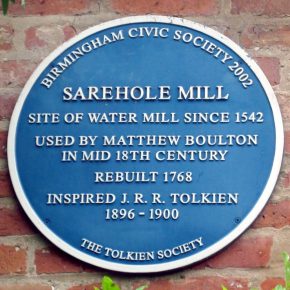 Tolkien moved to 5 Gracewell Road, Sarehole, together with his mother Mabel and brother Hilary in the summer of 1896. The four years they lived there left a lasting impression on Tolkien and Hilary. The Warwickshire countryside, and the hamlet of Sarehole in particular, later became the basis for the Shire in The Hobbit and The Lord of the Rings.
Tolkien moved to 5 Gracewell Road, Sarehole, together with his mother Mabel and brother Hilary in the summer of 1896. The four years they lived there left a lasting impression on Tolkien and Hilary. The Warwickshire countryside, and the hamlet of Sarehole in particular, later became the basis for the Shire in The Hobbit and The Lord of the Rings.
Opposite the Gracewell Road cottage was Sarehole Mill, the historic water-mill which became the inspiration for the OId Mill in Hobbiton. Tolkien himself contributed to the restoration of the mill in 1968, and it is now a museum operated by the Birmingham Museums Trust.
A blue plaque, funded by the Tolkien Society and the Birmingham Civic Society, was unveiled on 15th August 2002.
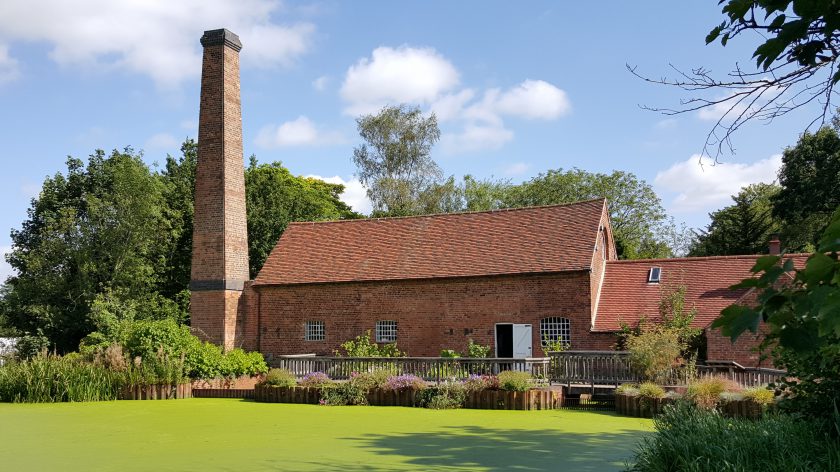
4 Highfield Road, Edgbaston, Birmingham
Tolkien and his brother Hilary moved into lodgings with a Mrs MacSherry at 4 Highfield Road during January 1910. He lived there before moving to study at Exeter College, Oxford, in the autumn of 1911. It was during this time that Tolkien’s guardian Father Francis Morgan forbade Tolkien from seeing Edith Bratt.
The blue plaque was funded by the Tolkien Society and the Birmingham Civic Society.
The Plough and Harrow Hotel, Edgbaston, Birmingham
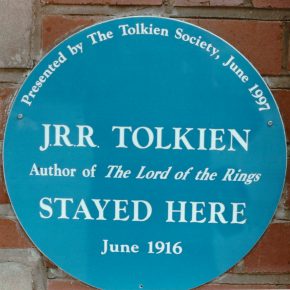
Tolkien stayed the night at the Plough and Harrow with his wife Edith on 3rd June 1916. Earlier that year the couple had moved to the village of Great Haywood in Staffordshire, near Brocton Camp where Tolkien was then based. On 2nd June Tolkien was informed that he was to join the British Expeditionary Force in France, but was given 48 hours leave before he had depart for Folkestone on 5th June. Tolkien chose to spend this time with Edith, whom he had married some months earlier on 22nd March.
The Tolkien Society funded the installation of two plaques in June 1997, one outside the entrance and another inside the room where Tolkien and Edith stayed the night.
2 Darnley Road, West Park, Leeds
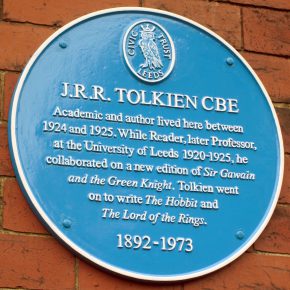 Between 1920 and 1925 Tolkien worked at the University of Leeds as Reader and later Professor of English Language. The Tolkien family lived at 2 Darnley Road in West Park between 17th March 1924 and 4th January 1926. While in Leeds, Tolkien worked with E.V. Gordon on a new edition of Sir Gawain and the Green Knight.
Between 1920 and 1925 Tolkien worked at the University of Leeds as Reader and later Professor of English Language. The Tolkien family lived at 2 Darnley Road in West Park between 17th March 1924 and 4th January 1926. While in Leeds, Tolkien worked with E.V. Gordon on a new edition of Sir Gawain and the Green Knight.
The plaque was unveiled on 1st of October 2012, and was the result of the collaborative efforts of the Tolkien Society and the Leeds Civic Trust.
Memorials
Tolkien Bench and Two Trees, Oxford University Parks
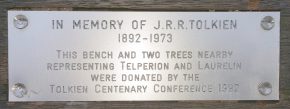
In 1992 the Tolkien Society and the Mythopoeic Society organised the J.R.R. Tolkien Centenary Conference at Keble College, Oxford. To mark the occasion and to commemorate the centenary of Tolkien’s birth, a special collection was held for the installation of a memorial bench and planting of two trees in Oxford University Parks near the river Cherwell. The trees represent Laurelin (a false acacia) and Telperion (a silver maple) from The Silmarillion.
The tree representing Laurelin was accidentally damaged by a lawn mower and is now substantially smaller than Telperion. A second Laurelin was planted, but became diseased and was eventually removed when it died.
The Tolkien memorial bench was renovated in 2015, with a new layer of varnish and installation of a new plaque paid for by the Tolkien Society. The old plaque is now in the Tolkien Society Archive.
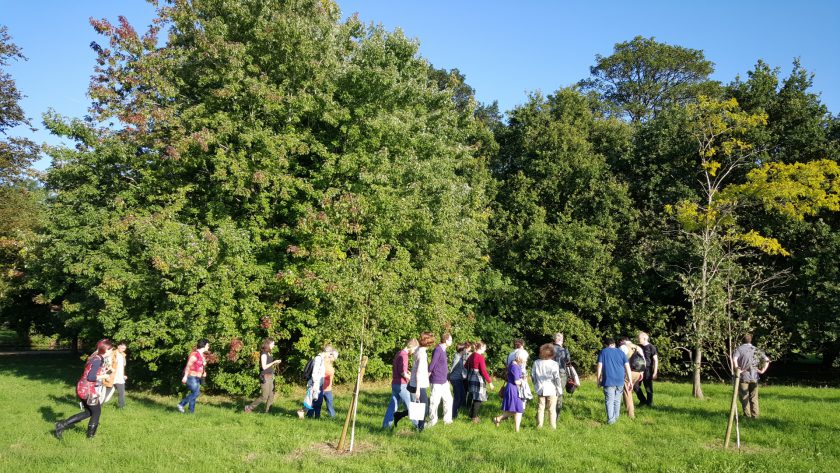
Shire Country Park
The Shire Country Park is a nature reserve in south Birmingham which follows the course of the River Cole and includes Sarehole Mill and Moseley Bog. In an interview to the Oxford Mail (2 August 1966), Tolkien described the area as “a kind of lost paradise”.
I could draw you a map of every inch of [the hamlet of Sarehole]. […] I loved it with an intensity of love that was a kind of nostalgia reversed. There was an old mill that really did grind corn with two millers […] a great big pond with swans on it, a sandpit, a wonderful dell with flowers, a few old-fashioned village houses and further away a stream with another mill.
It was formerly known as the “Millstream Project”, but in 2005 the Tolkien Society, Birmingham City Council, and local environmental groups worked together to rename it.